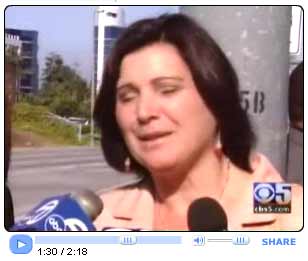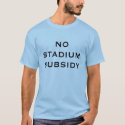
In 1911, Ambrose Bierce, a San Franciscan journalist, wrote the
Devil's Dictionary, a satirical book that lampooned political double-talk. It is fitting that we pay homage to Bierce today, when San Francisco and
double-talk are very much in the news.
An updated edition of Devil's Dictionary might have an entry like this:
turbo·thermic, adj. From turbo- (to blow) and -thermic (of or related to heat.)
1. Blowing hot air.
2. Characterized by huffing and puffing, e.g. subsidy supporters trying to blow down Santa Clarans' house of fiscal responsibility.
Have you ever wondered where subsidy opponents get our numbers? The short answer is, they all come directly from reports produced by the city's consultants, or by city staff.
For a slightly longer answer, let's look at the three myths listed in the "Myth Busters" flyer. This flyer was handed out at the Art & Wine Festival by the Santa Clara Plays Fair coalition, of which StadiumFacts is a member.
Myth: the stadium project would create thousands of jobs.
Fact: the number of jobs is just over 500. Note the fine print: "FTE = Full Time Equivalent. Per CS&L." Because of the highly seasonal nature of the jobs, many of them will be part-time. Their sum total is equivalent to 515 full time jobs.
Source: report from Keyser Marston Associates (KMA, consultants hired by the city) dated June 1, 2007, page 8.
(Click on this small image for a larger version.)

By the way, KMA is in agreement with CS&L on this. CS&L are the consultants hired by the 49ers themselves. CS&L's job is to make the deal look as good as possible. If all they can come up with is 515, then anybody who tells you "thousands of jobs" is just going
turbothermic, i.e. blowing hot air.
Myth: the stadium project would make a lot of money for the city.
Fact: the stadium would generate $650,000 of general fund revenue per year, from a city contribution of $222,000,000.
Source: KMA report dated June 1, 2007, page 8, and Implementation Plan and Timeline for the "City of Santa Clara Principles and Priorities for 2007-09," dated July 12, 2007, page 15.
(Click on these small images for larger versions.)


Myth: the stadium project will generate a lot of economic activity.
Fact: an office building would generate over 4 times the economic activity,
while requiring no subsidy. Besides, if the city is going to "invest" $222,000,000 (assuming a subsidy can ever be called an "investment,") then the
return-on-investment is the only bottom line that matters to the city. Keep in mind that the $650,000 annual return to the city discussed above
already includes taxes on the $85 million in economic activity. How much revenue other private businesses might gain, or how much salary are being paid to football players, are secondary factors.
Source: KMA report dated June 1, 2007, addendum.
(Click on this small image for a larger version.)

Furthermore, subsidy supporters who cite the $85M as a benefit are being disingenuous because
- they neglect to mention the comparison to an office building,
- only $41M of the $85M is actually new benefits; the rest comes from the existing 49ers training center -- the colloquial term for this is "double-dipping." Here is the KMA report again, page 2:
(Click on this small image for a larger version.)

Notes:
- The KMA report can be downloaded from here.
- The Implementation Plan and Timeline for the "City of Santa Clara Principles & Priorities for 2007-09" can be downloaded from here -- click on REPORT under item 5F.
Last week, prominent subsidy supporter and former Councilmember
Lisa Gillmor used the term "fuzzy math" to attack KMA's (and CS&L's!) numbers.
This is a curious phrase to use in this context, considering its history.
In the first presidential debate of 2000, George W. Bush repeatedly used the phrase "
fuzzy math" to attack statements made by Al Gore, and to defend his own tax cuts for the rich. According to a CNN poll taken immediately after the debate, most people thought
Gore won the debate, 48% vs. 41%.
Why are subsidy supporters jumping on this losing bandwagon?


















